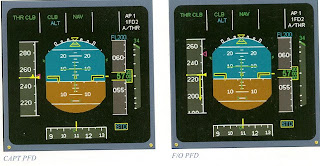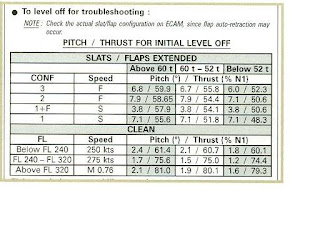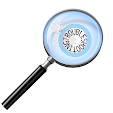
 Unreliable Speed
Unreliable SpeedBy Joelle Barthe
1 Introduction
Unreliable speed is one of the difficul situations that a pilot has to face. Once the failure has been identified, a procedure, based on pitch angles and thrst settings, will assist the pilot in safely flying the aircraft.
But the main difficulty is to rapidly detect an unreliable speed situation. Reaction time is crucial, since the aircraft may stall and overspeed conditions could cause aircraft damage.
It intended to make ground and flight crew more sensitive to the consequences of obstructed probes, and to prevent take-off with unriliable speed.
But once airborne, how can the crew handle an unreliable speed situation?
This article is based on A320/A330/A340 design. Cockpit effects, identification and troublshooting, remains similar for wide body aircraft and A380, with some specificities covered in the operational documentation.
2 Effects and consequences in the cockpit
Water, ice, dust, ashes, etc. may pratially or totally block pitot probes and static ports. Equally,tubes misconncected to the Air Data Modules (ADM), plastic covers not removed from probes, insect nest, radome damage, may lead to enrroneous pressure measurements.
The consequences of this erroous pressure information, once used by the ADRs, and/or the standby instruments, are the computation and the display of unreliable speed and/or altitude for all users.
Erroneous speed or altitude indications can be suspected, among others, in the following cases:
- Speed discrepancy (between ADR 1, 2, 3 and standby indication),
- The flutuction of the Indicated Air Speed or of the Pressure Altitude.
Depending on the effected probe, i. e. pitot probe os static port, differente indications in the cockpit will become unreliable. Therefore the crew should be aware that some of the usual cues to fly could be unreliable as indicated:


3 Identification and Handling of Unreliable Speed situations
Airbus has developed procedures and guidelines to help crews identify and handle an unreliable speed situation.
The Volume 3 of the FCOM and QRH provide the UNRELIABLE SPEED INDIC / ADR CHECK PROC procedure.
In addition, Airbus has developed training material in the Flight Crew Training Manual ( FCTM, available for A320/A330/A340/A380). The FCTM provides information about the causes and consequences of unreliable ADR computations. It also provides information on how to apply the UNRELIABLE SPEED INDIC / ADR CHECK PROC of the QRH.
An interative trainin tool, the e-Briefing, is also available on https://w3.airbus.com/ in the Flight Operations community, under ther heading "Safety and Operational materials".
4 - Procedures
As soon as a doubt about airspeed indication arises, or a relevant ECAM alert is triggered (relative to ADRs failure or discrepancy for instance), the UNRELIABLE SPEED INDICATION/ADR CHECK PROC procedure should be applied by the crew, following this sequence:
1) If the safe conduct of the flight is affected, APPLY THE MEMORY ITEMS, i. e. fly a pitch with TOGA or CLB thrust,
2) If the safe conduct of the flight is not affected, or once the memory items have been applied, LEVEL OFF, if necessaru, and start TROUBLESHOOTING,
3) If the affected ADR can be identified, fly with the remaining ADR.
4) If the affected ADR cannot be identified or all airspeed indications remain unreliable, FLY WITH PITCH/THRUST REFERENCES.
 4.1 Memory Items
4.1 Memory Items If the safe conduct of the flight is affected, the flight crew applies the memory items: theses allow "safe flight conditions" to be rapidly established in all flight phases (take-off, clim, cruise) and aircraft configurations (weight and slats/flaps). The memory items apply more particularly when a failure apprears just after take-off.
 Once the target pitch attitude and thrust values have been stabilized at or above minimum safe atltitude, or when the safe conduct of the flight is nor affected, the flight crew enter the 2nd part of the QRH procedure: level off the aircraft and perform troubleshooting.
Once the target pitch attitude and thrust values have been stabilized at or above minimum safe atltitude, or when the safe conduct of the flight is nor affected, the flight crew enter the 2nd part of the QRH procedure: level off the aircraft and perform troubleshooting.4.2 Troubleshooting and isolation
The table provided in the QRH gives the pitch (º) and thrust (%N1) to be applied to level off the aircraft according to its weight, altitude and configuration, along with flying technique advices.
 In situations where most primary flight data are erroneous, some indications may stil remain correct and should consequentely be used to help the crew stabilize the flight path. This is the case for the Flight Path Vector (FPV), reliable if the static ports are not blocked, and for the GPS altitude displayed on the MCDU, when GPS is installed.
In situations where most primary flight data are erroneous, some indications may stil remain correct and should consequentely be used to help the crew stabilize the flight path. This is the case for the Flight Path Vector (FPV), reliable if the static ports are not blocked, and for the GPS altitude displayed on the MCDU, when GPS is installed.When the flight path is stabilized, the flight crew will start the troubleshooting, keeping in mind that sometimes two or even all three ADRs might provide identical but erroneous data (e.g. due to icing conditions, flight in volcanic ashes, etc).Therefore, do not instinctivelu reject an ADR that is suspected to be affected.
If the troubleshooting procedure enables the crew to identify the affected ADRs, then a normal situation can be. resumed.
But if the affected ADR cannot be identified, or all ADRs are affected, then the flight crew will fly without speed reference, using the pitch and thrust tables.
4.3 Flying using pitch/thrust tables
First, the crew has to switch OFF two ADRs and keep one ADR ON, to keep the Stall Warning Protection.
Then, the crew will [bold] fly the aircraft without speed references, using pitch (º) and thrust (%N1) settings.

5 Back UP Speed Scale (BUSS)
In order to dedrease the crew workload in case of unreliable speed, Airbus has developed the Back-UP Speed Scale (BUSS) that replaces the pitch and thrust table. The BUSS is optional on A320/A330/A340. It is basic on A380, being part of the ADR Monitoring functions.
This indication is based on angle of atack (AOA) sensor information, and is therefore not affected by erroneous pressure measumements.
The BUSS comes with a new ADIUR standar (among other new system standards), where the AOA information is provided through the IRs and nor through the ADRs. This enables selecting all ADRs off without loosing the STALL WARNING PROTECTION.
The AOA information provides a guidance area in place of the speed scale. When the crew selects all ADRs OFF, then:
- The Back-Up Speed Scale replaces the PFD speed scale on both PFDs,
- GPS Altitude replaces the Altitude Scale on both PFDs.
The Back-Up Speed Scale then enables to fly at a safe speed, i. e. above stall speeds, by adjusting thrust and pitch.
 The BUSS will be displayed once all ADRs are switched OFF. Therefore, on aircraft that have the BUSS, when the flight crew cannot identify the faulty ADR(s) when performing the troubleshooting, or when all ADRs are affected, the flight crew will switch OFF ADRs, and will fly the green area of the BUSS.
The BUSS will be displayed once all ADRs are switched OFF. Therefore, on aircraft that have the BUSS, when the flight crew cannot identify the faulty ADR(s) when performing the troubleshooting, or when all ADRs are affected, the flight crew will switch OFF ADRs, and will fly the green area of the BUSS.However, if the safe conduct of the flight is affected, the memory items must still be applied before troubleshooting.
As the BUSS is associated to the ADR monitoring funcitions, some unreliable speed situations can be automatically detected (e. g. new ECAM warning "NAV ADR 1+2+3 FAULT"), and some ECAM procedures will lead to the BUSS activation by requesting to switch OFF all ADRs.
6 Conclusion
An unreliable speed situatio may be difficult to identify, due to the multiple scenarios that can lead to it. Therefore, training is a key element: indeed the flight crew's ability to rapid detected the abnormal situation, and to correctely handle it, is cricial.
In case of any doubt, the pilot should apply the pitch/thrust memory items, and then refer to the QRH to safely fly the aircraft, and to positively determine the faulty source(s) before eliminating it (them).
In addition, to further assit the pilot in detecting the failure and safely fly the aircraft, Airbus has developed the BUSS, which provides a safe flying range indication.
Finaly, to reduze the probally of experiencing unreliable speed situations, on-ground actions, such as comprehensive maintenance and through pre-flight exterior inspection, should be stressed.








Um comentário:
Very interesting post!
Postar um comentário